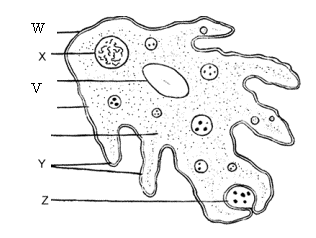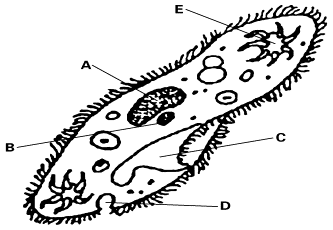Define the following words (know the word's base meaning in some)
Endosymbiosis
Protozoa
Algae
Pseudopodia
Cilia
Flagella
Pellicle
Sporozoan
Quinine
Eukaryote
Contractile
Vacuole
Endocytosis
Conjugation
Amoeba (or ameba)
Parasite
Host
Chloroplast
Eyespot
Endoplasm
Ectoplasm
Binary fission
Paramecium
Euglena
Spirogyra
Be able to label each of the protists we looked at (paramecium, ameba,
spirogyra, and euglena)
